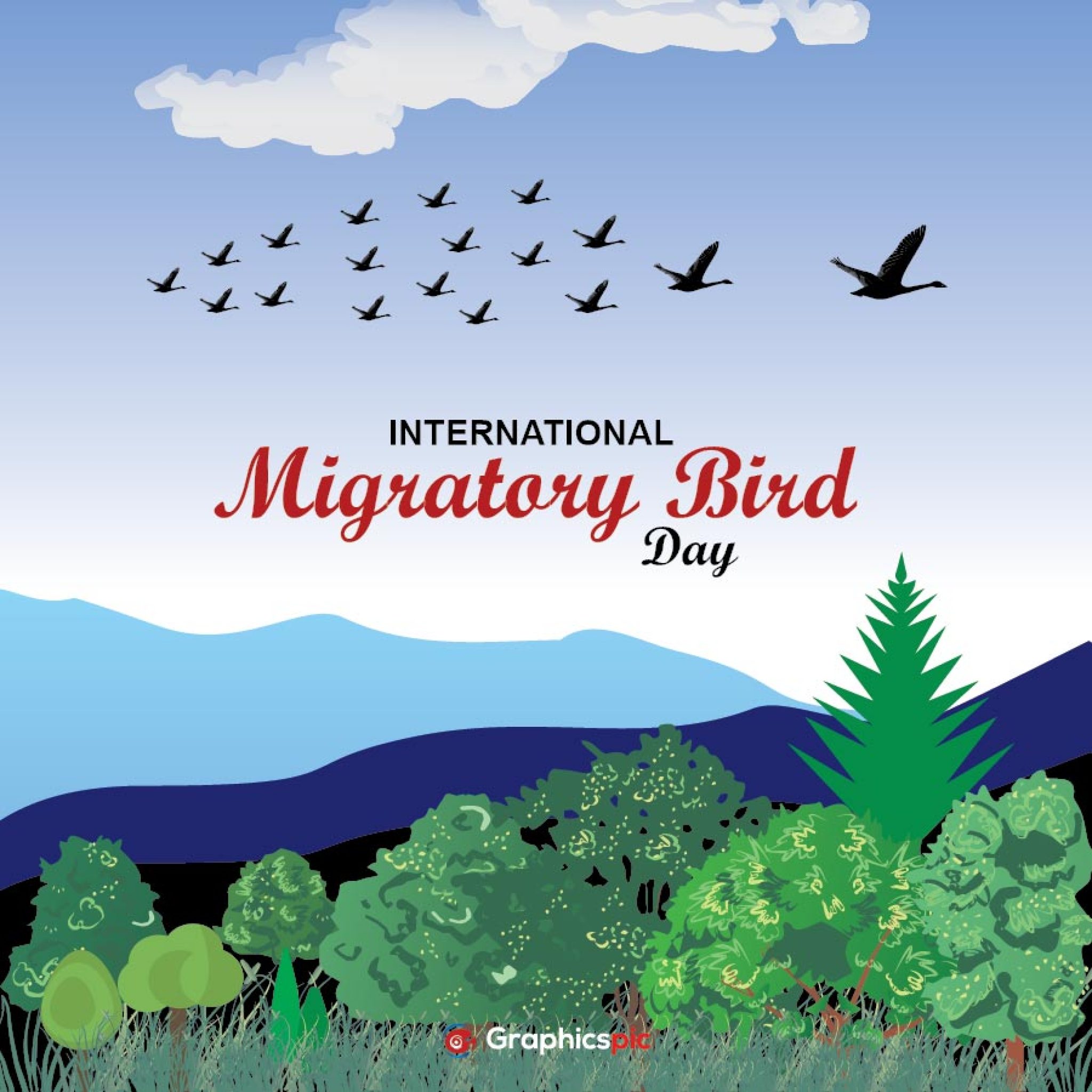World Migratory Bird Day (WMBD) is not just another entry on the calendar; it is a clarion call to appreciate the multifaceted phenomena surrounding migratory birds. Observed on the second Saturday in May, this day serves as a reminder of the intricate ecological webs that connect distant habitats, demonstrating the profound interdependence between species, environments, and human activity. While many may regard birds simply as picturesque beings flitting across the sky, this celebration underscores their critical roles as ecological indicators and agents of seed dispersal. To delve deeper into the significance of WMBD, it is imperative to explore its implications for biodiversity, conservation efforts, and the environmental interconnectedness that binds our world.
At the crux of the WMBD celebration is the phenomenon of migration, an awe-inspiring and complex behavior seen in numerous bird species. Each year, millions of birds embark on prodigious journeys, navigating diverse terrains, braving formidable weather, and dodging potential predators. From the Arctic Tern, which boasts one of the longest migrations—covering around 44,000 miles annually—to the smaller scale movements of songbirds, these journeys epitomize the endurance and adaptability of avian species. Understanding these migrations is not merely an ornithological curiosity; it provides valuable insights into the health of our planet’s ecosystems.
Moreover, migratory birds are harbingers of change. Their arrival signals the changing seasons, acting as vital indicators of climate patterns and environmental shifts. Ornithologists and ecologists use data collected from bird migrations to monitor the effects of climate change on populations and habitats. As migratory patterns shift due to rising temperatures and altered food availability, the consequences ripple through the ecological fabric. This highlights the urgent need for conservation efforts that are not just focused on local habitats but extend to the global stage, recognizing that ecological wellbeing transcends borders.
WMBD also serves as a platform to raise awareness about the myriad challenges facing migratory birds. Habitat loss, climate change, and environmental pollution pose significant threats. Urbanization has decimated vital stopover sites necessary for rest and refueling during long migrations. Wetlands, marshes, and coastal areas that serve as critical feeding grounds are being drained or developed for agriculture and human habitation. Every year, these factors combine to displace countless bird species, leading to population declines and even extinctions. The message is clear: conserving these migratory species mandates an integrative approach involving local communities, governments, and global organizations.
One of the highlights of WMBD is the emphasis on collaborative conservation efforts that cross international boundaries. Birds do not adhere to geopolitical boundaries, and thus, conservation initiatives must be holistic, uniting countries and organizations in their efforts to protect migratory species. Various treaties and agreements, such as the African-Eurasian Migratory Waterbird Agreement (AEWA), exemplify this cooperative spirit. These frameworks, while ambitious, are essential for ensuring the survival of migratory birds by safeguarding their critical habitats throughout their migratory routes.
Furthermore, the role of citizen science cannot be overlooked. Individuals around the world can participate in birdwatching and reporting sightings, contributing invaluable data to scientific efforts. Programs that encourage local communities to engage with their natural surroundings can foster a sense of stewardship and responsibility. Schools, nature clubs, and conservation organizations often host birdwatching events and educational workshops that not only deepen understanding but also inspire generations to care for these winged travelers. Such initiatives amplify the message of WMBD, transforming awareness into action.
In a broader context, migratory birds symbolize resilience and continuity in an ever-changing world. Their innate ability to navigate vast distances reminds us that nature has its own rhythm and wisdom, one that we must respect and protect. As custodians of the earth, our responsibility extends beyond immediate concerns; it compels us to foster environments where these creatures can thrive and inspire. In essence, WMBD should not just be commemorated as a single day of recognition; rather, it should be an ongoing commitment to protect our planet’s biodiversity.
The aesthetics of migratory birds are often celebrated in art, literature, and culture. They invoke a sense of freedom, beauty, and adventure. From poetry that romanticizes their flights to artworks that capture their elegance, the symbolism of migratory birds resonates deeply within human consciousness. Recognizing their intrinsic value goes hand-in-hand with understanding their ecological importance. Thus, WMBD encourages individuals to embrace the natural world with a holistic perspective—one that appreciates beauty, recognizes complexity, and advocates for sustainable practices.
In conclusion, World Migratory Bird Day transcends its title, beckoning us to an intricate narrative of migration, conservation, and interconnectivity. By embracing a more nuanced perspective on the relationship between humans and birds, we cultivate a dialogue that reinforces our commitment to protecting these incredible creatures and their environments. This day heralds not only the celebration of migratory birds but also a clarion call to engage in responsible stewardship of our planet. As we observe this significant occasion, let us reflect on the lessons imparted by these magnificent travelers and our obligation to safeguard their journeys.









Leave a Comment